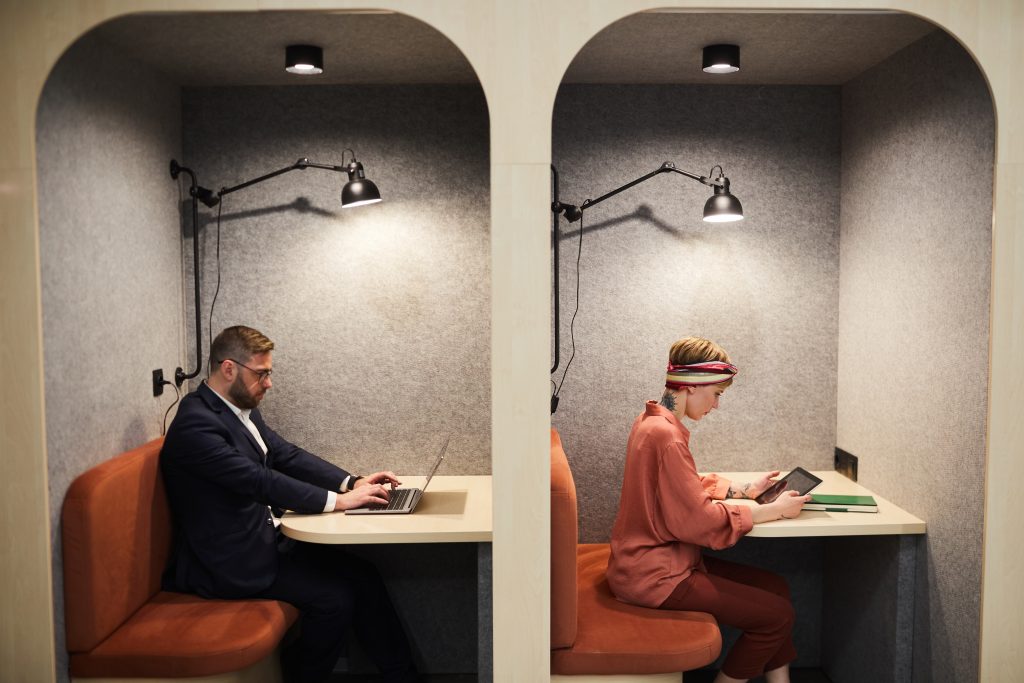Remote Interpretation – ‘Being Heard But Not Seen’ Stretches Novel Heights
Remote Interpretation – ‘Being Heard But Not Seen’ Stretches Novel Heights
Since the rise in digitization and moreover after the hit of Covid-19 changes have been brought to the landscape of interpreting technology. With the ever growing period of globalization and e-commerce, technology is driving the way we communicate, how we connect to one another and the way we conduct business. Just as the translation industry has experienced developments in technical tools as well as web and cloud technologies, advances in interpreting-related technologies have evolved with the increasing demands of the ever connected world. In today’s world of internet, our outlooks have changed; the experience is everything. We are constantly and unconsciously encircled by smart, multi-function devices, and we assume as well as expect to receive services far and wide at any time.
The sector of interpretation within the language industry has been hit hard and most heavily affected, both positively and negatively by the pandemic. The onsite interpreting has been hit hard due to lockdown measures and restrictions on in-person meetings to maintain distance, on the other hand, remote interpreting services have been high in demand due to rise in connectivity in the virtual world, leading to a boom in the remote interpretation world.
Long before the pandemic, different sorts of remote interpreting technologies were introduced but this technology made way into the interpreting industry after covid-19. Remote interpretation since then has been viewed as the safest and ideal solution in connecting people all over the world to ease down with the language barrier. Due to strict lockdowns and restrictions imposed on in-person meetings, gatherings and events, remote interpretation has served as a great solution in connecting .
Remote interpreting – being heard but not seen, is not a novel idea but has become a very practicable preference of delivering the interpretation services owing to more reliable high-speed internet availability and developments in web and telephonic applications. In far-reaching expressions, remote interpreting denotes to a technique in which the interpreter is not tangibly in the same location as the conversant. There are different levels of remote interpretation, each mentioned below with technological advancements.
Video remote interpreting (VRI)
The first variant of remote interpretation is video remote interpreting (VRI). This option adopts the technology of interpreters working from a remote facility using devoted video-conferencing solutions.
Video remote interpreting (VRI) is an emergent field and predominantly valuable for momentary interactions in hospitals, schools or businesses located in areas not sufficiently served by onsite interpreters. Legal hearing in courts have also been using VRI for some time in circumstances where an interpreter is not proximately accessible and the case at hand is time-sensitive. Video remote interpreting (VRI) gear producers are now making it stress-free than ever to access these on-demand services; one simply has to download the software on a computer or applications on mobile devices. Savings are guaranteed in the form of travel costs, accessibility and more over reduced logistics planning.
Nonetheless, every technology comes with pros and cons. Thus, the downside of Video remote interpreting (VRI) is the disruption faced in audio and video feed due to delay or unsynchronized broadcast due to weak Wi-Fi connection and other quality problems. Likewise, interpreters depend on visual signals and body language to comprehend and understand the messages speakers are carrying, but in remote interpretation the video feed provided is often inadequate; thus Video remote interpreting (VRI) is also not a workable standby for onsite interpreting in circumstances involving high interactivity. Additionally, onsite technical care staff needs to be open and available all the times for setup and troubleshooting the equipment at both ends. More often, there is no onsite technician available and interpreters are troubled having to cope with the technology instead of concentrating on the interpretation itself.
With advancements in technology and the rise in the demand of remote interpreters, it is increasingly becoming common to resort interpreters to remote interpretation set-ups. The idea behind this is the ease of interpreter being physically present at the event site and their working-units are connected to the same interpretation system being used by the client but located in a different room. This solution promises good quality video remote transmission and display screens to receive visuals and sounds in uninterrupted sequence. Now, international organizations are progressively planning to implement remote interpreting in their permanent accommodations, to allocate interpretation booths location in one room to a meeting in another room. This method called booth borrowing gives facility managers sufficient tractability to overcome physical space boundaries and handle large events or last minute changes in language necessities.

Another advancement in the remote interpreting technology which is gaining ground is that of virtual multilingual meetings. In this scenario, interpreters are offsite but can join the meeting remotely from poles apart locations. Various systems have been established to upkeep multilingual remote participation with either a telephone or web conferencing service, allowing the parties to connect from anywhere with a mobile app, tablet, computer or video device without any surplus hardware to an off-site interpreter at a call center or home office. Members can join the conference service and merely hand-pick the language of choice, consenting delegates to take part in their own native language. Unlike generic video calling applications, specific video remote interpreting software retrieved through an online portal or application can bid a more unified course and augmented retreat.
As we know now, improvements and unified solutions are uninterruptedly being established and elevated to solve in specific matters with audio quality and process inadequacies. The future will certainly bring further enhancements and developments to remote interpreting platforms as well as more on edge working environments for remote interpreters. Presently, high-stake meetings would still courtesy onsite interpreting with strong technology and confirmed track record of consistency and eminence delivery until further expansions and research discoveries.














